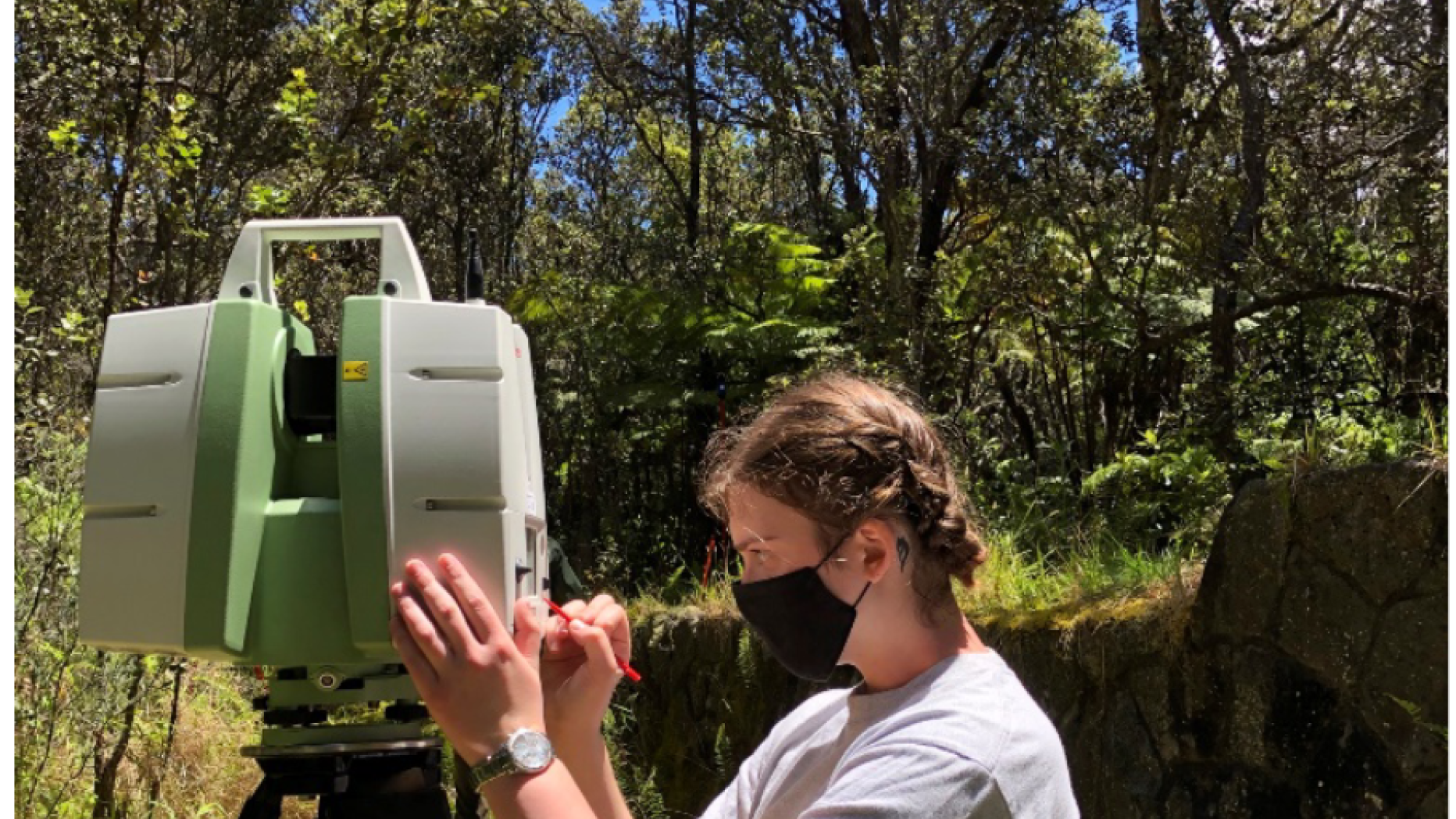Tali Flatté | Hawai’i Volcanoes National Park, Cultural Resources Management

"This internship provided the opportunity to experience working at a National Park and to observe how cultural resource management functions in real time."
Stuart Weitzman School of Design
102 Meyerson Hall
210 South 34th Street
Philadelphia, PA 19104

"This internship provided the opportunity to experience working at a National Park and to observe how cultural resource management functions in real time."
"I spent this summer at Hawai’i Volcanoes National Park (HAVO) on the Big Island of Hawai’i working in the Cultural Resources Management department. The park consists of 335,000 acres, ranging in elevation from sea level to 4,169 m.a.s.l. The park encompasses both the Kīlauea and Mauna Loa volcanoes. As such, the landscape is extremely dynamic, often subjected to eruptions and earthquakes which can drastically change the appearance and makeup of the park. In particular, the 2018 eruption of the Kīlauea volcano drained the Kīlauea caldera and caused it to collapse approximately 2,000 ft downwards. In addition to the lava flow, the subsequent months were rocked by tens of thousands of earthquakes causing property damage and structural instability for many of the HAVO structures. My work this summer involved investigating the condition of many cultural resources in the aftermath of these events. Through a mix of onsite survey and archival research, I updated the NPS Cultural Resources Inventory System (CRIS) with conditions assessments, impact investigations, management texts, significance statements, and photo documentation for the resources.
One main project concerned the Thomas A. Jaggar Museum along Crater Rim Drive. Situated on the rim of the caldera, the museum overlooks Halema’uma’u Crater, considered to be the home of the volcano goddess Pelehonuamea. The 2018 eruption compromised the structural stability of land upon which the museum is situated. As a result, the park will be remodeling the site to create a new observation point for the Crater. My fellow intern and I were tasked with assisting to close out the historical record on the structure prior to its remodel. On site, I documented the changed appearance of the museum by retaking photographs and cataloguing the various damage which had occurred. I also delved into the HAVO archives for blueprints, work orders, and park correspondence to help illustrate the chronology of the building. This project will culminate in a National Register nomination.
Another project involved the documentation of resources located in the recesses of the Kahuku Unit. The Kahuku Unit operated as a cattle ranch for over 150 years (during which it had a brief stint as a secret radar station for the military in WWII) before being acquired by HAVO in 2003. Scattered within the 116,000 acres are water tanks, corrals, cattle ramps, water troughs, sheds, logging stations, and other enclosures. Many of these resources had no photographs and minimal description in the database. Armed with some rather uninformative maps, a Garmin GPS, and four-wheel drive, we spent several days on site tromping through waist-high grass and mud, stepping on hidden pipes and falling down steep slopes. We were able to find, photograph, and assess approximately 80 resources.
One of my side tasks was to assist the archaeologists with laser scanning different structures around the park. We spent one day scanning a CCC incinerator and a few days scanning the ʻĀinahou Ranch House. During these excursions, we discussed how the park was affected by both the 2018 eruption and the COVID-19 pandemic, as well as how it has adapted its preservation mission and techniques over the years.
Throughout this internship, I was able to implement many of the skills I acquired over the past year. The largest aspect of my work included documentation and survey, and I constantly drew upon building pathology and conservation science for conditions assessments. The conversations we had on site often felt like a real-time theories of preservation discussion as we considered whether to repair, reconstruct, or stabilize damaged resources. This internship provided the opportunity to experience working at a National Park and to observe how cultural resource management functions in real time."